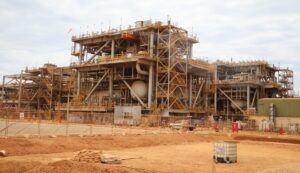Emissions from the 116 proposed coal and gas projects would swamp the reductions from the safeguard mechanism
New fossil fuel projects would create 24 times more pollution than what the safeguard mechanism would (theoretically) remove
As the UN releases the latest IPCC report revealing the catastrophic damage from climate change and urgently calling on all nations to reduce emissions, new research highlights that emissions from new fossil fuel projects under development in Australia are likely to vastly outweigh any theoretical reductions under the Safeguard Mechanism.
Analysis of the 116 new fossil fuel projects in the Federal Government’s Major Project list reveals they would add 4.8 billion tonnes of emissions to the atmosphere by 2030. And far from being negated by the Safeguard Mechanism this increase in greenhouse gas would be 24 times greater than the proposed 205 million tonne reduction in emissions the Safeguard Mechanism aims to achieve.
Far from moving away from coal and gas, the 116 new fossil fuel projects on the Federal Government’s Resources and Energy Major Projects (REMP) list are actually two more than last year.
These calculations may well be conservative. Several large, advanced projects on the Major Project list including Santos’s Barossa gas field, Shell’s Bowen Gas Project and Chevron’s Cleo Acme were excluded from the calculation because production estimates were not included in the data, and several vast new unconventional gas basins including the Beetaloo, Canning and Lake Eyre basins are not on the list at all. Many of these projects are being actively supported by Australian governments
By 2030 these 116 projects would produce 1.4 billion tonnes of coal and 15,400 petajoules (PJ) of gas and oil. For context, Australia produced 422 million tonnes of coal and 6,022 PJ of gas in 2021-22. The emissions released from producing and burning this coal and gas would result in approximately 4.8 billion tonnes of CO2-e to 2030.
It might surprise people to discover that the Safeguard Mechanism will do virtually nothing to negate these emissions. Of the total 4.8 billion tonnes CO2-e, the Safeguard Mechanism would apply to just 344 million tonnes that would be emitted in Australia. Under the current Safeguard Mechanism proposal, just 86 million tonnes of emissions related to these projects would need to be reduced or offset.
This is less than 2% of the total 4.8 billion tonnes.
Clearly, Australia’s climate policies are not working.
Rather than stop these damaging projects, it legitimises and helps facilitate them.
A stated objective of the Safeguard Mechanism is to provide ‘policy certainty’ to polluters and it is working to actually assist gas and coal projects to gain approvals from state government authorities and avoid additional regulation.
What we need is the real certainty that would come from the Government pledging that no more coal or gas projects will be approved.
Between the Lines Newsletter
The biggest stories and the best analysis from the team at the Australia Institute, delivered to your inbox every fortnight.
You might also like
The Safeguard Mechanism’s pro-fossil flaws – explained
Governments work hard to ensure that Australian climate policy seems effective to media and voters, while simultaneously ensuring it does nothing to limit the key thing that is wrecking the climate – fossil fuel expansion.
The Safeguard Mechanism helps gas companies take the piss
The Government’s Safeguard Mechanism is supposed to limit emissions; instead, it just lets companies cheat.
The great gas rip off: how the government can stop us all getting burned
The Albanese government could soon intervene to start fixing one of the biggest ongoing public policy fiascos in this country’s history: Australia’s rampant, uncontrolled gas export industry.

